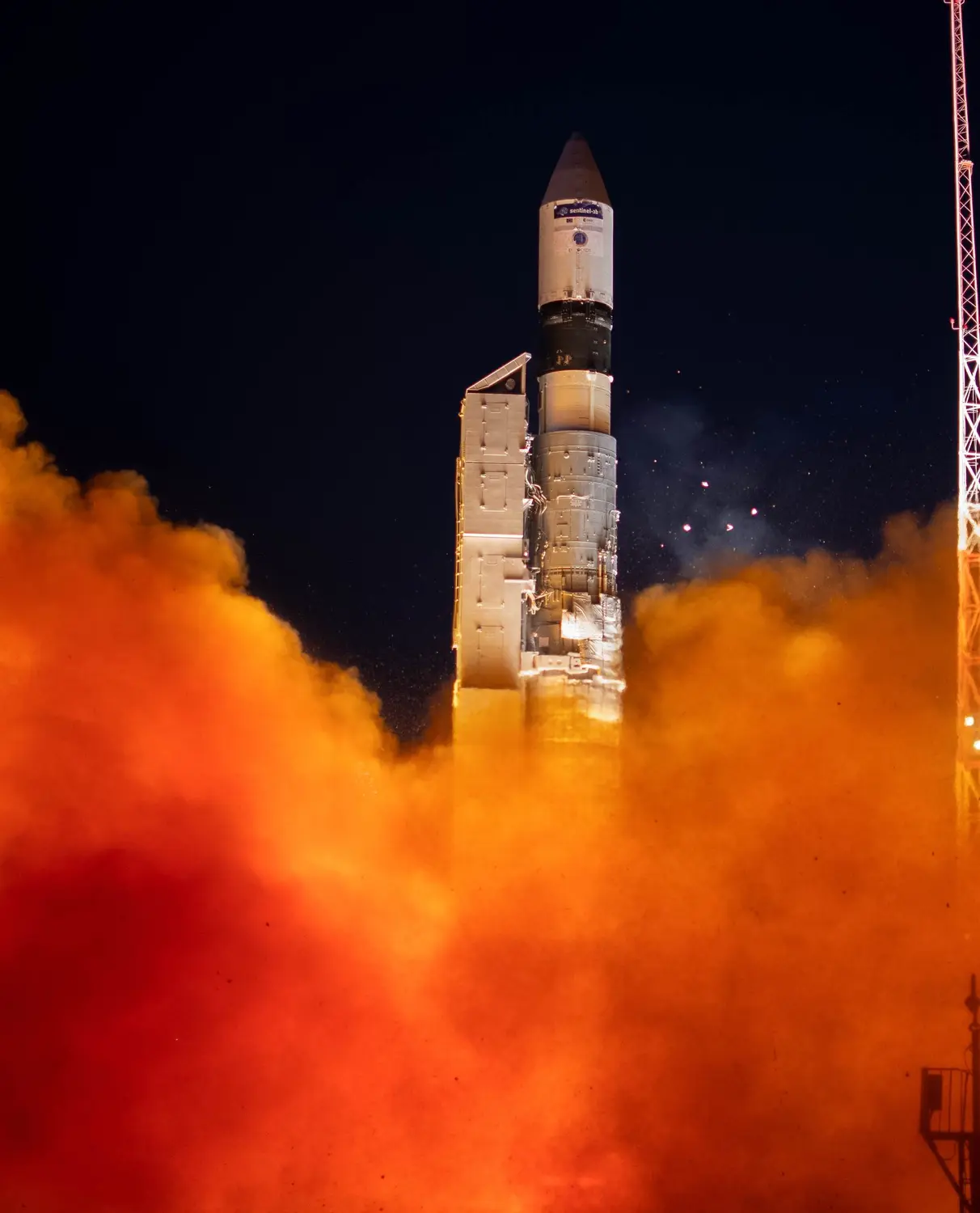Goniets-M n°24L to 26L & Blits-M1
Launch Success
Liftoff Time (GMT)
23:11:57
Thursday December 26, 2019
Watch Replay
Official Livestream
Mission Details
Read Article
Launch Notes
Last flight of Rokot/Briz KM.Blits-M1 wasn't separated for an unknown reason.
Blits-M1
BLITS (Ball Lens In The Space) is a Russian satellite. The satellite is totally passive and spherical, and is tracked using satellite laser ranging (SLR) by the International Laser Ranging Service. The design of BLITS is based on the optical Luneburg lens concept. The retroreflector is a multilayer glass sphere; it provides uniform reflection characteristics when viewed within a very wide range of angles, and can provide a cross-section sufficient for observations at low to medium orbit heights. A similar design was already tested on a smaller laser reflector carried on board of the METEOR-3M spacecraft launched on December 10, 2001. The purpose of the mission was to validate the spherical glass retroreflector satellite concept and obtain SLR (Satellite Laser Ranging) data for solution of scientific problems in geophysics, geodynamics, and relativity. The BLITS allows millimeter and submillimeter accuracy SLR measurements, as its "target error" (uncertainty of reflection center relative to its center of mass) is less than 0.1 mm. An additional advantage is that the Earth's magnetic field does not affect the satellite orbit and spin parameters, unlike retroreflectors incorporated into active satellites. The BLITS allows the most accurate measurements of any SLR satellites, with the same accuracy level as a ground target.
Low Earth Orbit
1 Payload
8 kilograms
Goniets-M n°24L, 25L & 26L
Goniets (Russian: Гонец) is a Russian civilian low Earth orbit communication satellite system. It consists of a number of satellites, derived from Strela military communication satellites. Goniets-M are upgraded versions of the Goniets satellites, a civilian derivate of the military Strela-3 satellite system. They are operated in the Goniets-D1M constellation. The Goniets system was offered to support international health organizations to meet their global communications needs for the transfer of medical data and records to remote sites.
Low Earth Orbit
3 Payloads
840 kilograms
Rocket


Manufacturer
KhrunichevPrice
$13.00 million
Rocket
Height: 29.1m
Payload to Orbit
LEO: 2,150 kg
GTO: 0 kg
Liftoff Thrust
1,875 Kilonewtons
Fairing
Diameter: 2.62m
Height: 6.74m
Stages
3
Launch Site
Stats
Rokot
34th
Mission
2nd
Mission of 2019
2019
101st
Orbital launch attempt